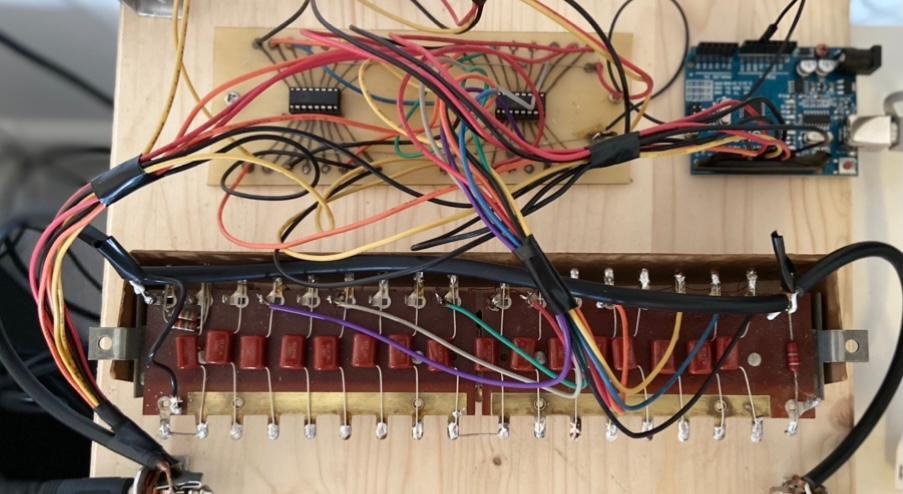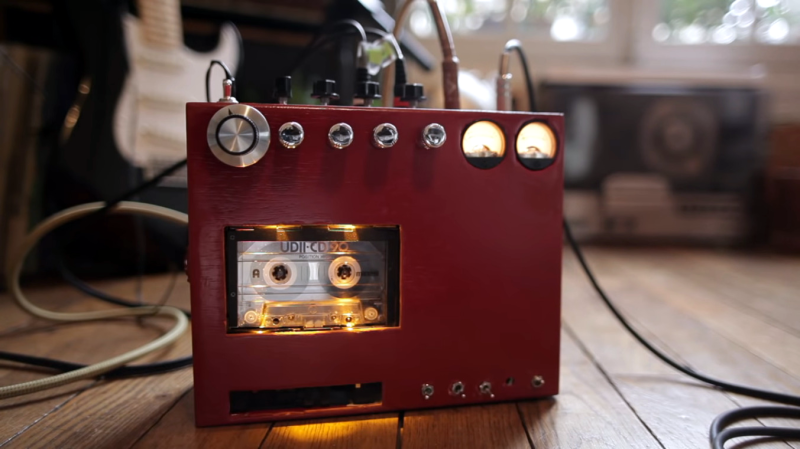After a couple of meetings with my supervisor and many hours of research and deliberation, my project idea has finally begun to take shape. My initial plan was to build a Mellotron from used cassette player parts, in which all effects would also be created with magnetic tapes. I soon realized that there is a lot of work done in this domain, leaving me little space for innovation, so I had to reconsider the direction of my project.
My new proposal is the creation of a guitar effect chain that combines different types of obsolete time-based audio effect technologies with the capabilities of modern microcontrollers. The foundation of this idea came to me first, after discovering the Scanner Vibrato & Reverb guitar effect by Analog Outfitters, a hardware entirely made of refurbished Hammond organ parts. Since then I have managed to acquire one of the core elements of this device, the so-called phase shift line, and build an experimental vibrato effect prototype by combining it with an Arduino Uno microcontroller.

Fortunately, my previous research on magnetic tape was not in vain, as it shaped the development of my new project idea Since the initial project would also include audio effects based on magnetic tape technology, I came across several solutions that make it possible to convert portable cassette decks into delay effects. The combination of a cassette tape delay with the aforementioned phase shift line, led to the idea of a multi-effect and thus the concept of an analog delay chain was born. These two components could provide modulation effects such as vibrato, chorus, and various types of delays, but by introducing a spring reverb tank, even more color could be added to the chain.

In order to expand the capabilities of this delay chain, I would add a microcontroller that is responsible for all control processes. This could even enable manipulation via Bluetooth or WLAN and therefore compress the size of the physical interface on the device. Thus, it would be enough to include only a few rotary encoders to control basic operations, such as volume or rate and an LCD module to display these values. But in more detail on these issues in my upcoming blog entries.